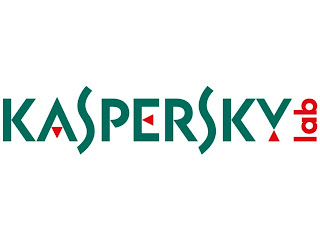Kaspersky Endpoint and Network Security Software provides centralized protection of Windows workstations, file servers and mail servers from malware, potentially dangerous programs and network attacks. The software has integrated Application Control, Device Control and Web Content Filtering. These controls combined with the powerful protection of Kaspersky provide a deeper level of endpoint security. Administrators can restrict access to external devices and non-essential websites. A customizable whitelist or blacklist of applications and tools to limit their privileges add to Kaspersky’s protective measures, which increase employee productivity, data protection and IT policy enforcement. Kaspersky Endpoint Security for Windows benefits from an enhanced antivirus engine and a range of optimization technologies, ensuring the most efficient use of workstation and server resources with minimal impact on performance.
System Watcher and other proactive components in Kaspersky Endpoint Security for Windows deliver protection against threats that have not yet been recorded in signature databases. Using Behavior Streams Signature patterns, suspicious behaviors are analyzed, immediate action is taken and, if necessary, unwanted changes are rolled-back and damaged data is restored. Flexible, centralized administration. Using the Kaspersky Security Center application, remotely install the solution on workstations and servers, set protection parameters, manage anti-malware updates, monitor security status and respond to events. Features such as centralized vulnerability flagging, virtual machine support and sub-administration capabilities are also included.
Kaspersky’s powerful Kaspersky Administration Kit has evolved into the comprehensive Kaspersky Security Center. The product provides centralized administration for Kaspersky Endpoint Security for Windows on workstations and file servers. From this central console, install, configure and update Kaspersky Lab endpoint solutions on the network, whether on physical or virtual machines.

Integrated Protection:
- Security for file systems. All files are scanned (for malicious content) when created, launched or modified. Any individual files, directories and disks (local and network) can also be scanned.
- Kaspersky Security Network. Tens of millions of members in our global user community volunteer (“opt-in”) to provide data about suspicious activities and attempted malware infections to the cloud-based Kaspersky Security Network. The network immediately provides a response to suspected threats, much faster than traditional methods of protection. Using this experiential data, cloud-assisted protection reduces “false positives” which translates into an increase in business productivity.
- Safety online. Kaspersky applications scan HTTP traffic in real time using a variety of methods that include heuristic analysis of web pages. Blocking access to infected websites whose addresses are blacklisted ensures Internet users can work in a secure environment. Blacklisted URLs are updated real-time by the Kaspersky Security Network or can be customized by the administrator.
- Protection from hacker attacks. An improved firewall, together with IPS, safeguard workstations and servers on any type of network. Predefined rules for more than 250 of the most commonly used applications reduce time spent on configuring the firewall.
- Secure electronic communication. Mail traffic is scanned at the level of the data transfer protocol (POP3, IMAP, MAPI and NNTP for incoming traffic and SMTP for outgoing traffic, including SSL connections). The solution is compatible with the most common mail programs. The application also scans files and links sent via instant messaging systems (ICQ, MSN, AIM).
- Protection from phishing. A database containing URLs of phishing sites is used to identify and disable links to such websites in the Internet browser, at the same time rebuffing emails from phishers in the mail program. This list is updated real-time by the Kaspersky Security Network.
Powerful Controls:
- Application Startup Control. Kaspersky can prevent certain (or groups of) applications from launching by using administrative and cloud-assisted Whitelisting or Blacklisting. Customize either a “default deny” or “default allow” scenario to prevent unwanted applications from running.
- Application Privilege Control. Restrictions can be applied to application behaviors in the operating system, and their access to computer resources. Using administrator or cloud-assigned categories, applications can be grouped according to their trustworthiness and assigned system rights.
- Web Controls and Content Filtering. Provides administrative filtering of web resources by URL, content and data type. Flexibly set controls to grant permission, prohibit, limit or conduct user audits for certain categories of websites. Flexible scheduling of web usage rules enables web access during certain hours, helping enforce company policies.
- Device Control. Removable devices (data storage devices, I/O devices) on the corporate network can be regulated with flexible policy scenarios. These devices can be restricted to a granular device ID level, connection bus, or device type. A scheduling function enables certain rules to take effect during specific times. These controls reduce the risk of malicious programs penetrating users’ computers and help prevent confidential data leaks.
- Vulnerability Scanner. On-demand and on-access vulnerability scanning and centralized reporting allow the grouping of endpoints according to detected vulnerabilities. The feature helps identify system weak points, missing patches and neglected application and OS updates.
Homepage – http://www.kaspersky.com/products/business/applications/endpoint-security-windows
Download Trial [349 MB]
Buy Now Kaspersky Endpoint and Network Security Software
Tags: Administrator Console, Anti-virus, Business Security, Device Control, endpoint security, Enterprise Security, Firewall, Kaspersky, mail Server, malware protection, Network Access Control, Network security, Security Center, workstation protection
program4secure.blogspot.com

0 comments:
Post a Comment